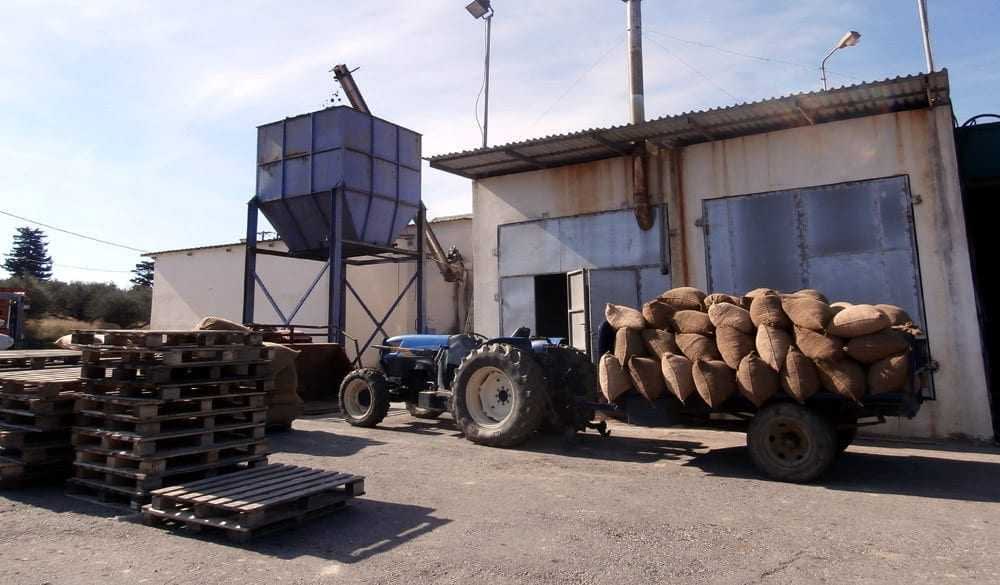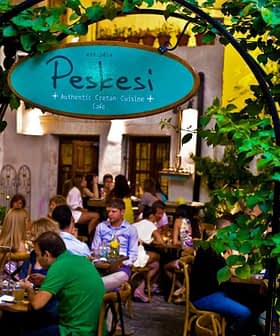Panayotis Karantonis, director of ESVITE, the Greek Association of Olive Oil Processors and Packers, and a member of the IOC advisory committee, said he expects 275,000 to 300,000 metric tons of Greek olive oil this year.
There are limited quantities of early harvest EVOO because the green (table olives) had a good price on the market.
Nikos Michelakis, Scientific Advisor to SEDIK, the Association of Cretan Olive Municipalities, said he thinks it will be around 260,000 metric tons.
Sotiris Plemmenos, Treasurer of SEVITEL, the Greek Association of Industries and Processors of Olive Oil, and purchasing and production manager at Esti EVOO and Lelia Olives, predicted an “average quantity” of olive oil this year.
With very limited olive oil reserves left over from last year (just 100 – 150 tons in Crete, according to Michelakis), the early harvest of unripe olives has been completed. The regular harvest has begun in some parts of Crete and the Peloponnese, while much of the main Greek harvest will get underway from now through the end of November.
Karantonis told Olive Oil Times that olive oil quality will be “exceptional” this year, since the weather in Greece has generally been very good for the olives. “There was a lot of rain when it was needed, and reasonable temperatures,” Karantonis said, and there has been almost no problem with the olive fruit fly, except in Crete, where it is under control. The olives in the Peloponnese are especially good this year.
“The big question,” according to Karantonis, is what prices to expect, since a recent drop in the cost of fresh Italian oil is likely to affect the situation in Greece, “given that the Greek market is fully dependent on what’s happening in Italy.”
If Italian producers are ready to sell at these lower prices, that’s good news for traders who can push prices further down. But if the Italian producers won’t sell at these rates and prices go up in Italy, that will push up prices in Greece and Spain.
On the other hand, Karantonis added, if Italy and Spain have the improved crop yields they expect this year, that will also affect prices in Greece: a better supply of oil this year will “inevitably push prices down.”
Plemmenos agreed that average prices in Greece may be lower than last year given Spain’s improved forecast for its olive crop. SEDIK’s website shows Greek producer prices for the regular harvest generally holding at €3.30 to €3.50 per kilogram through early November, then dropping to €3.00 to €3.20 per kilogram in the last two weeks.
As Karantonis said, “it’s very difficult to say now what will be the situation tomorrow. We are in a wait and see situation,” as far as prices are concerned.
Karantonis pointed out that some regions, such as the western Peloponnese, have a very good crop this year, although Messenia as a whole (in the southwestern Peloponnese) has a bit less than last year, as does Laconia. In contrast, there are especially big crops in the prefecture of Ilia (in the northwestern Peloponnese).
In Lesbos, Stratis Camatsos, founder of Evo3, said, “the quality right now is actually superb. We are hitting the low acidity that we are after. However, the quantity has fallen a bit from last year so far, about 10 percent, due to the heat and the lack of water. Our mountain groves are producing more quantity this year than our sea level groves.”
In central Greece, “it’s a very bad year,” according to Stamatis Alamaniotis, a business development consultant with family roots in the olive oil industry who spoke with experienced olive and olive oil traders and shared his findings with Olive Oil Times.
In central Greece, much of the crop was lost during the growing stage in May. “The temperature changes affected flowering, and there were many losses during and after flowering,” Alamaniotis found. This left “a huge shortage” in both olive oil and table olives, especially with Amfissa (Amphissis) olives from the region. The quality is high, but the quantity is low. On the other hand, Kalamata olives are doing much better than the Amfissa variety, and in the north, Thasos Island’s Thrumba olives are doing well.
In Halkidiki, northern Greece, Argyris Bouras, owner of Eleones Hellenic Olive Products, spoke with farmers and others in the olive oil industry who agreed that there will be about 20 percent less early harvest extra virgin olive oil from Halkidiki than last year.
He pointed out that the quantity and price of olive oil coming out of Halkidiki is influenced not only by the number of olives or the yield of oil, but also by the price olive processors offer farmers for table olives. “If they pay a high price, farmers will sell their olives for (table olives). If not they will sell more for olive oil.”

Village olive mill, Astrikas, Crete (Photo: Lisa Radinovsky)
Evi Psounou Prodromou of Yanni’s Olive Groves in Halkidiki agreed that “this year there are limited quantities of early harvest EVOO because the green (table) olives had a good price on the market.”
Although Bouras expected “really good” quality oil from the regular harvest this year, he recently began to fear that the upcoming regular harvest in Halkidiki may possibly show an unexpected, significant drop in quantity.
In Crete, Michelakis reported “relatively good” yields so far (for example, average fruit to oil yields between 4.5‑to‑1 and 6‑to‑1, with an acidity of 0.3 percent in rare cases, 0.4 to 0.6 percent more often, from mills in Astrikas, Kolymbari, and Agii Pantes).
Michelakis noted that olive fly problems are at acceptable levels in spite of delayed spraying, “thanks to high summer temperatures and the individual interventions of producers.”
However, Kiki Varikou, an entomologist at the Institute of Olive Tree, Subtropical Plants and Viticulture in Chania, Crete, has learned of “higher populations” of the olive moth (Prays oleae) than usual this year in certain olive groves in the Kolymbari area (but not all of them). She expects the olive moth to affect mainly table olives, largely by reducing olive quantity due to premature fruit drop, but most likely not affecting olive oil quality.
Based on information from local services, producers, and commercial agents, Michelakis expects about 85,000 metric tons of olive oil to be produced from this year’s crop in Crete, with notable variations in the amount produced in different parts of the island.
Still, the favorable conditions — early rains in southern Greece and Crete followed by sunny days — could lead to higher production and a greater oil yield.








